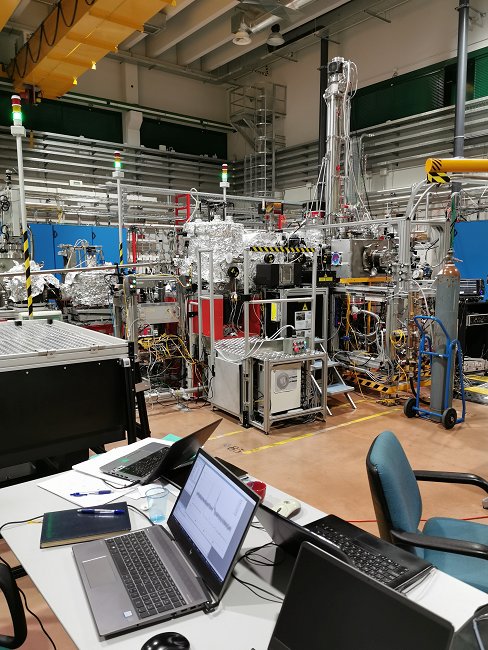Studies of atoms, molecules and structures by photons and particles
Type of project: national programme
Duration: 2015 - 2027
Project leader: Prof. Dr Matjaž ŽitnikCode: P1-0112Coworkers: Assoc. Prof. Dr Matjaž Kavčič, Doc. Dr Andrej Mihelič, Doc. Dr Klemen Bučar, Dr Darko Hanžel, Prof. Dr Iztok Arčon, Assist. Prof. Dr Sabina Markelj, Mateja Hrast, Matic Pečovnik, Prof. Dr Primož Pelicon, Špela Krušič, Dr Žiga Barba, Dr Iztok ČadežPartners: Jožef Stefan Institute, FS UM (Faculty of Mechanical Engineering at Maribor University), UNG (University of Nova Gorica), FMF UL (Faculty of Mathematics and Physics at Ljubljana University)This research programme deals with the interaction of Coulombic systems with light, electron and ion beams, characterized by energy exchange ranging from a few eV to a few tens of keV. This is high enough to excite electronic degrees of freedom, which then relax through a number of decay channels triggering a specific system evolution. The advanced spectroscopic (imaging) techniques are applied to study the structure of matter and its response to external perturbations. We are interested in peculiarities of multielectron and multiatomic systems that are exposed to a sequence of basic interactions in special environments, and we are looking for new opportunities to use their nontrivial (nonlinear) response to increase the sensitivity of analytical techniques. We are optimizing applications of known standard techniques for analysis of matter (XANES, EXAFS, XES, PES, AES, XRF, TRXS, PIXE, RBS, ERDA, NRA, PIGE, SIMS, Moessbauer) and introducing advanced approaches for material studies (RIXS, XRS, MeVSIMS). In our studies of low density matter (atoms, molecules, clusters) we are emphasizing approaches with intense and coherent new light sources (free-electron laser, High-Harmonic-Generation sources) and we are testing the use of ion beams with efficient approaches to electron spectroscopy (magnetic bottle time-of-flight spectrometer). We deal with in-situ and in-operando techniques for research of materials related to energy production and energy storage, in particular, we study the functionalization of thin organic layers on metal surfaces. We continue to improve the imaging of biological tissue slices for our research on topics such as hyperaccumulators, growth in austere conditions and nanotoxicology. We are developing efficient and simple XRF techniques for quick and portable analysis (food, metals, plastic).
We maintain a good number of experimental stations for ion beam analysis to assure a competitive interest for experiments performed by foreign research groups and we actively participate in beamtime contests at large synchrotron facilities around the world, also bringing in our own (large) experimental equipment (high resolution X-ray spectrometer). We regularly perform experiments at synchrotrons PETRA in Hamburg, SOLEIL in Paris, and ESRF in Grenoble, and we also participate in experiments with free-electron lasers, such as FERMI (Trieste) and LCLS at SLAC (Stanford).

Above: The tender x-ray emission spectrometer at the P01 beamline of the PETRA III synchrotron at DESY in Hamburg.

Above: The LDM beamline endstation at the FERMI free-electron laser in Trieste.
